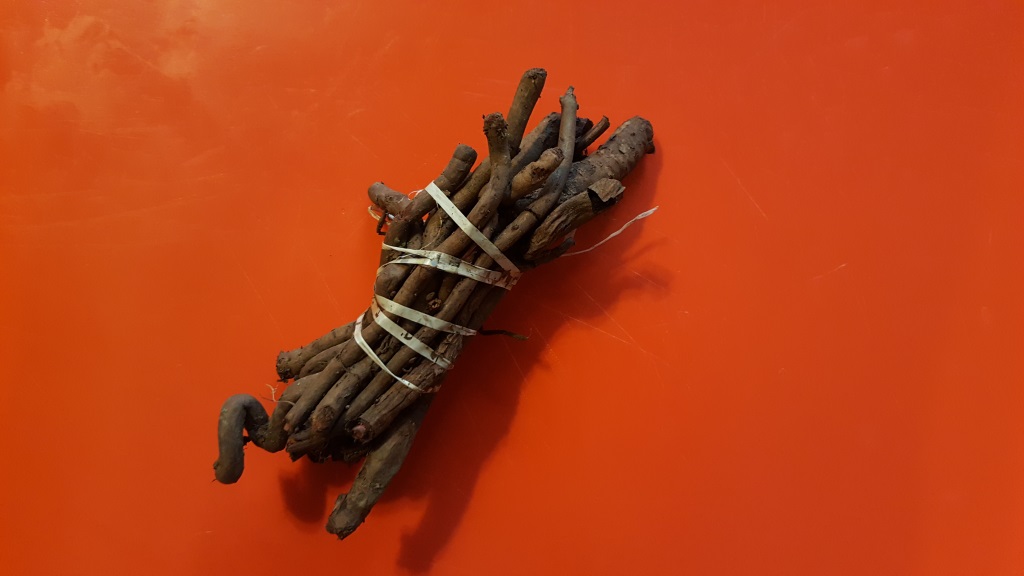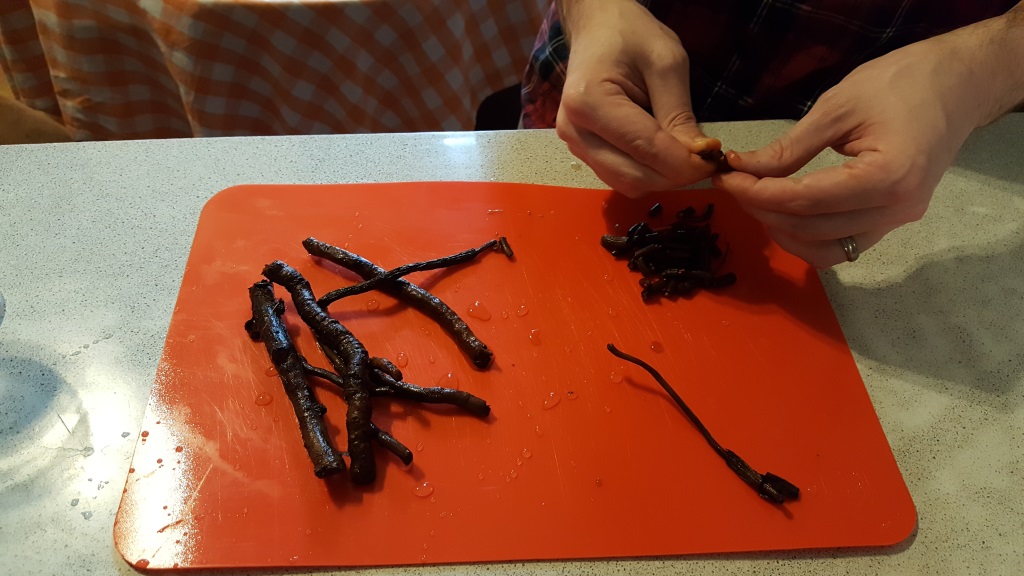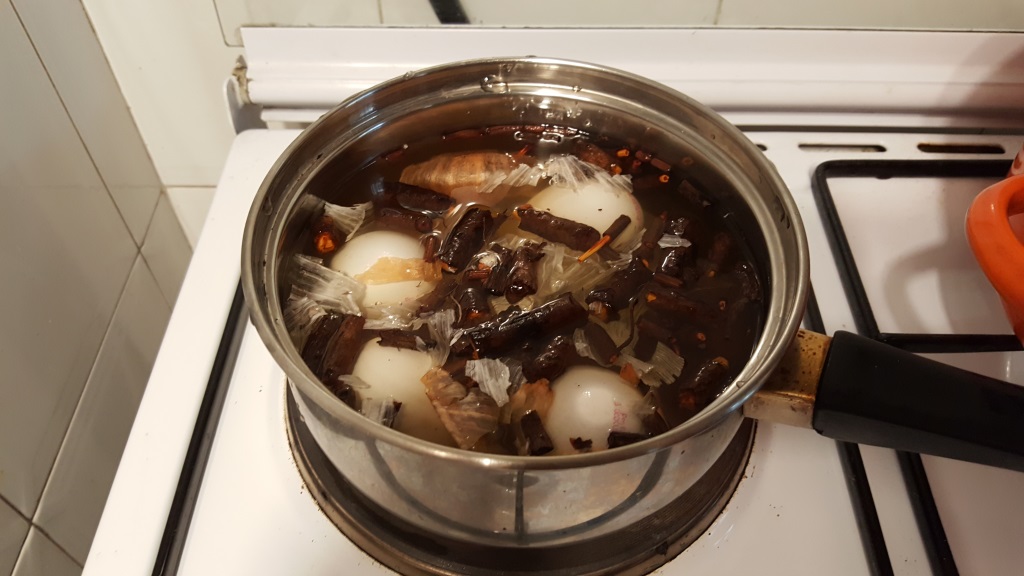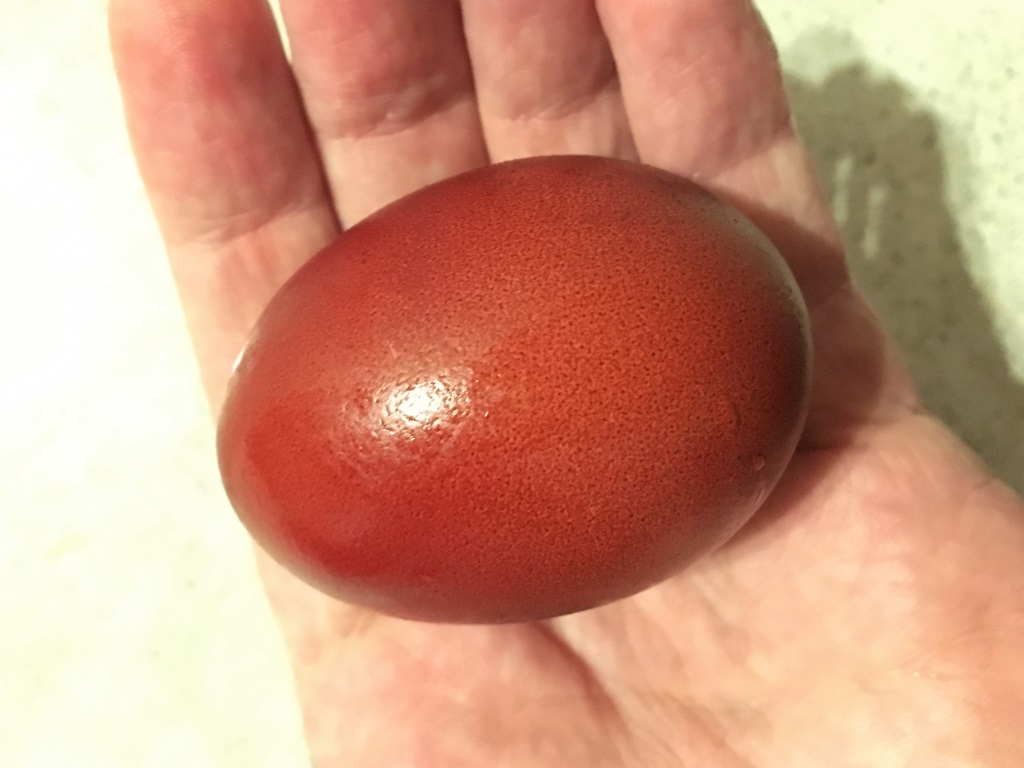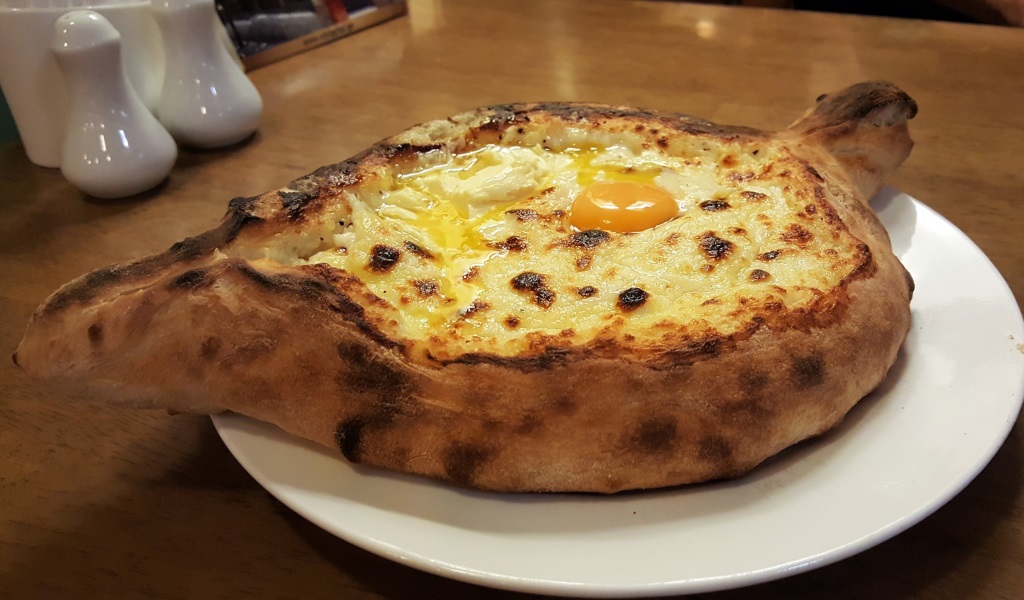
March 2 – April 3, 2018 (Start of spring)
Greeting: გამარჯობა (Gamarjoba)
Gratitude: გმადლობთ (Gmadlobt)
Currency: Lari (₾)
Visa: 1 year
Cost of living: Low
Moving to Tbilisi after snowy Skopje fast-forwarded us into spring. The chilly March wind started to soften, trees budded and then bloomed, and everywhere the city creaked back to life. We balanced soul-warming carbs and cheese with the first fresh fruits and vegetables of the year. The mountains remained too snowed-in✨ to visit at this time, but the city was in that sweet spot between boarded-up off-season and over-touristed on. Georgia offered much to love. But, not as much as we had been led to believe. The sky-high expectations we had going in would have been hard to match for any destination, and Tbilisi struggled to meet them.
Where we stayed

Our Airbnb proved to be a bit of a disappointment this month. On the surface it checked all the boxes – wifi, kitchen✨, workspace, nearby transit and groceries. Inside it was split into two main rooms, the bedroom and everything else✨, with a bathroom and closet branching off of the bedroom. High ceilings were nice, and both rooms had space for a loft balcony. Above the bedroom served as storage, but the overlook above the living area had a desk, a second couch, and clothes drying rack.
The neighborhood✨ surrounding Marjanishvili Square✨ felt very local✨. There were plenty of small shops and street vendors. We were nowhere near the touristy core of Tbilisi that shows up in all the travel blogs, and we rather liked it that way. Anyway, Marjanishvili Metro Station was just two blocks from us. All that sightseeing stuff was a couple of subway stops (and only ₾0.50/$0.20) away.
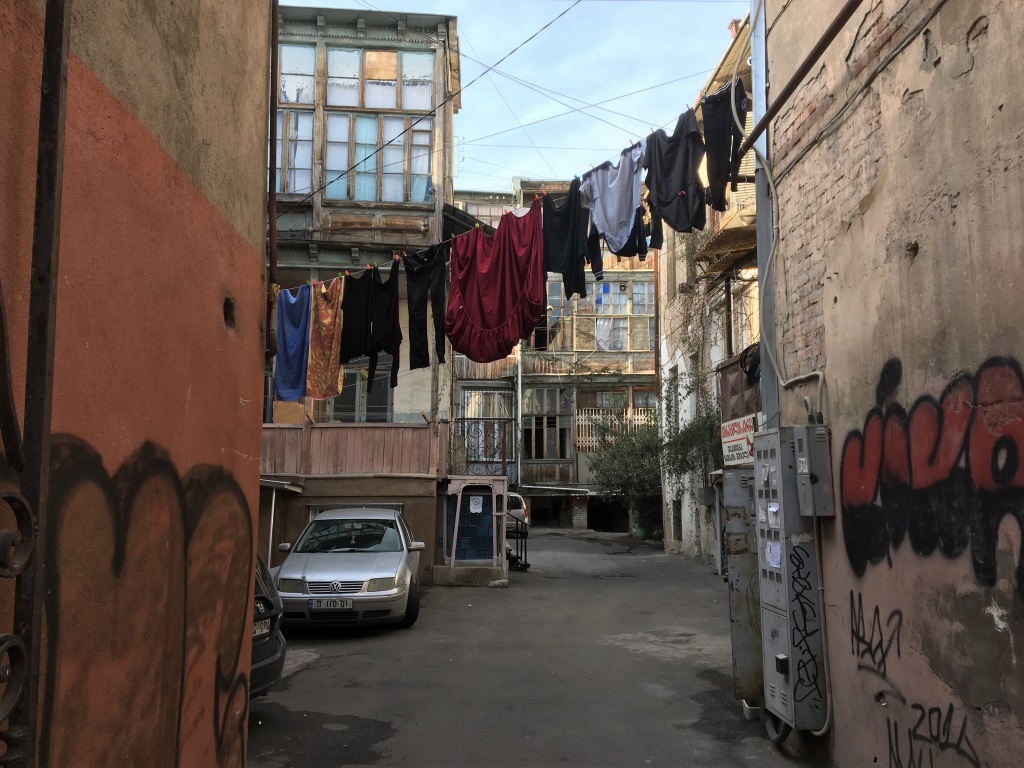
On the other hand, our block was always busy. Traffic streamed past the building at all hours of the day, and our apartment, just half a floor up✨ from street level, absorbed much of the noise. A poorly-fitted manhole cover clanged twice for each passing vehicle. During the final days of our stay, work crews spent several nights replacing under-road✨ piping just a few meters down the block. Starting the construction at midnight and ending it as rush hour picked up at 8am helped guarantee the least restful sleep possible.
Our host promised the wooden shutters on the windows would help block the noise, but the effect was almost negligible. Worse, it left us in total darkness. We grew more accustomed to the background noise as the month went on, but the unpleasant feeling of waking up in a cave✨ never went away.
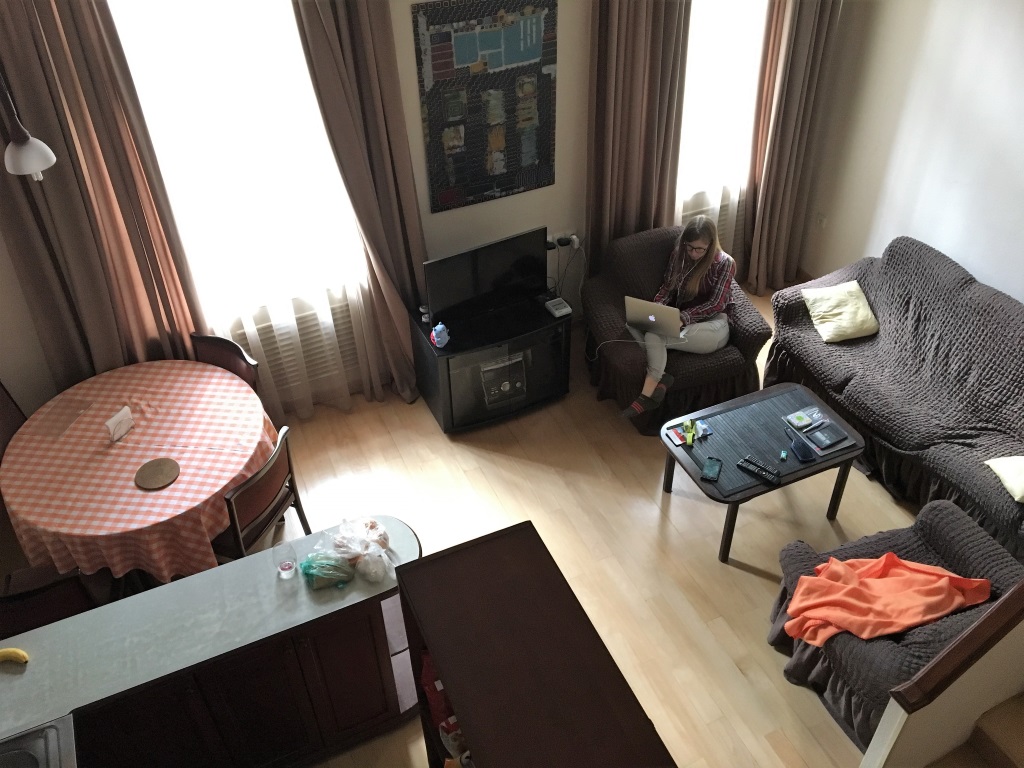
What we did
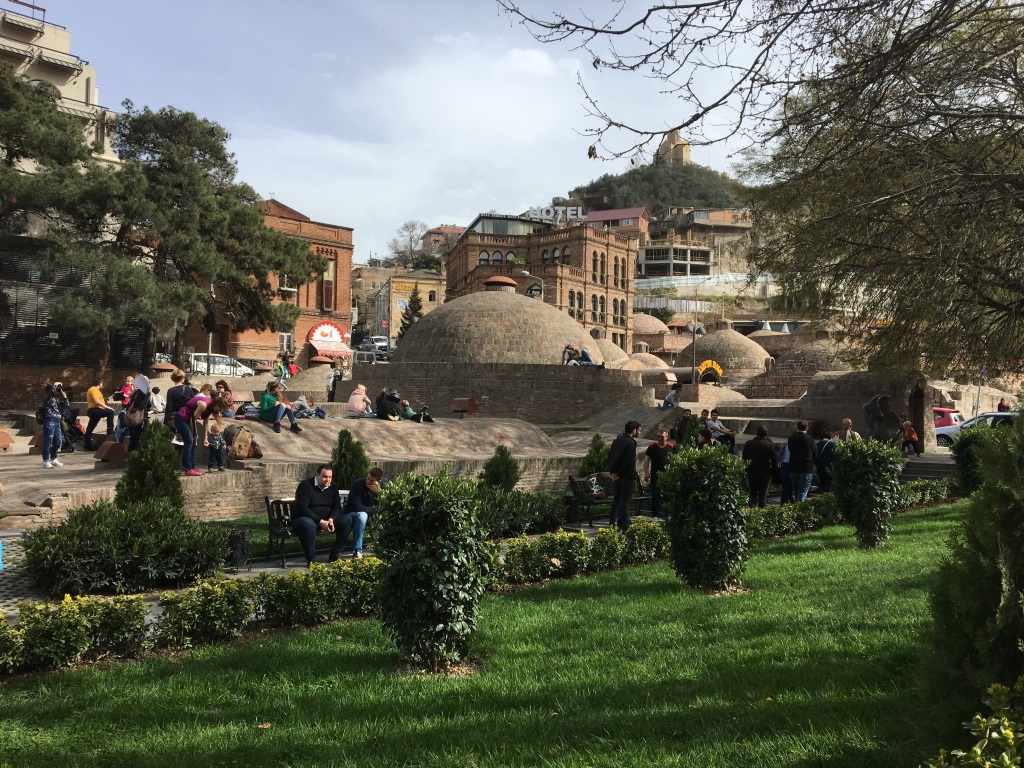
Tbilisi is an up-and-coming travel destination, and the word is out about the city’s Old Town. Cliffside structures✨ and sulfur baths are every bit as beautiful as we’d expected. But it also came across as a Georgian Disneyland, ceded to tourists by the much larger and more dynamic✨ city around it. Many attractions are tucked at the foot✨ of Narikala Fortress✨. The baths✨ are in a large public square, popular as a hangout and meeting place. A row of colorful homes✨ looks down on it, and the blue-tiled Jumah Mosque✨ borders to the south. Behind that, a small trail leads to a hidden waterfall✨. Orthodox churches✨ seem to be on every corner. Every other corner, though, was crowded with pushy restauranteurs and tchotchke shops. It felt overdone✨, with words like “authentic” and “traditional” thrown around a lot. It felt polished✨ and sterile compared to the rest of Tbilisi. It felt like a tourist trap.
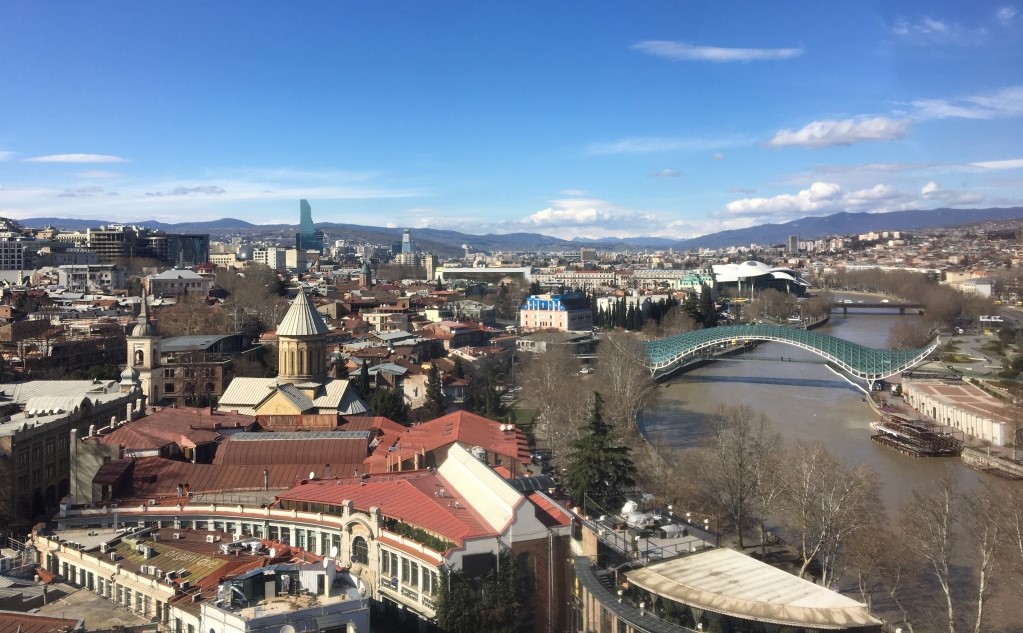
It wasn’t hard to put that part of the city behind us, however. Or rather, beneath✨ us. Narikala Fortress was just a modest hike✨ (or a modern cable car✨) away. The castle ramparts✨ offered stunning views✨. Its uneven layout✨ required quite a bit of climbing to reach the best perches, but we were in rare company✨ up there. Nearby, the massive statue Mother Georgia✨ welcomes visitors with a bowl of wine in one hand while a sword in the other deters ne’er-do-wells. Back on ground level, we visited the pedestrian-only Bridge of Peace✨ (very photogenic✨) and admired the modern architecture✨ from Liberty Square✨ north on Shota Rustaveli Ave✨.
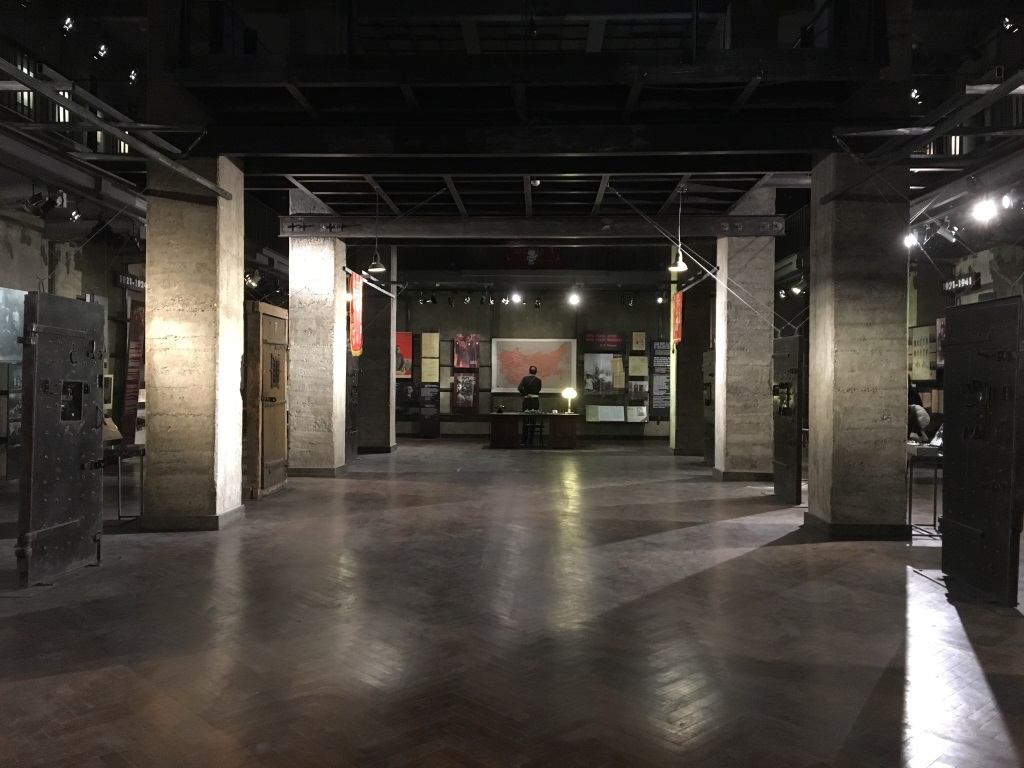
This was conveniently where we also found Tbilisi’s National Museum, good for a few hours’ visit. It covers Georgian history from prehistoric✨ times through the Soviet Occupation. The “treasury” showcases church textiles✨ alongside the products of skilled goldsmiths. Plenty of jewelry✨, including goblets, trinkets✨, and an adorable necklace of tiny turtles✨ prove their mettle at metal. Georgia’s ancient history means a wealth of artifacts as well: stone✨ and wood✨ carvings, religious✨ items, literature✨, even a wooden cart✨ from the Bronze Age. Another set of rooms is devoted to traditional costumes✨ and weaponry✨. The tour ended on an exhibit that covered the oppression (or Occupation) of Georgia, first during the Russian Empire, then the Soviet Union✨. We were especially curious how they would handle the delicate subject of Georgia’s most infamous figure, Joseph Stalin. Answer? They didn’t. He was essentially written out of history.
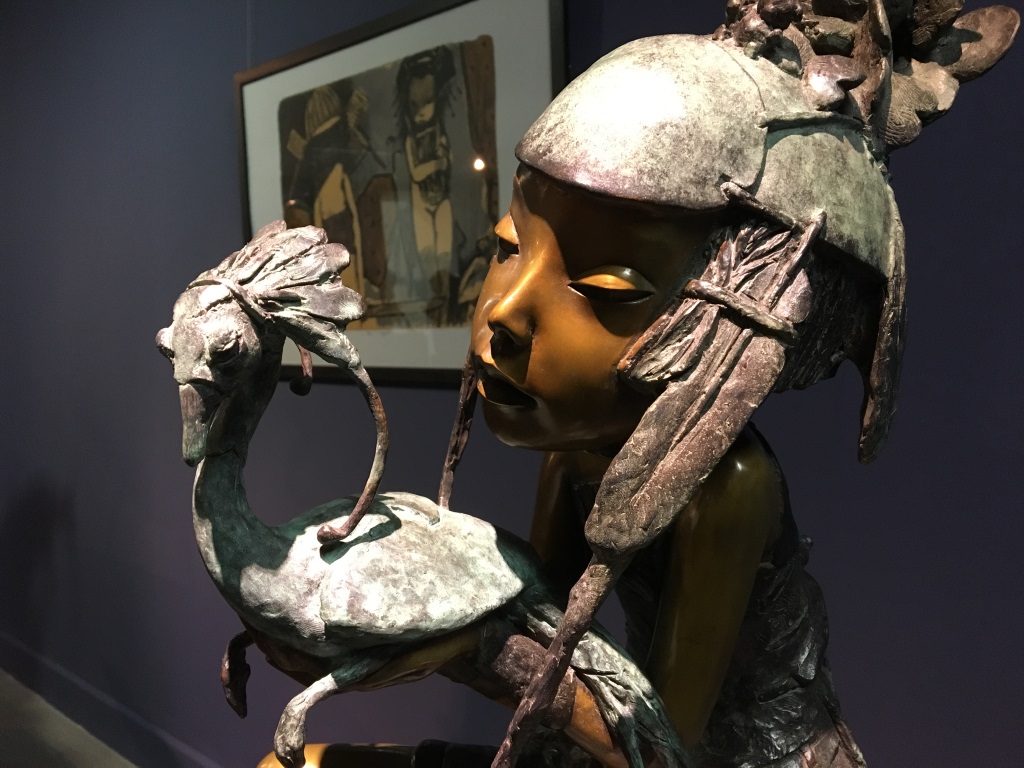
The National Gallery is a small✨ but important showcase✨ for Georgia’s most famous artists✨. Niko Pirosmani, the nation’s most revered painter, receives the most attention. His primitive works primarily reflect life in the countryside✨, but also more fanciful subjects✨. His black and white giraffe✨ appears on all kinds of souvenirs. A temporary exhibition of Belarusian sculptor Andrej Ostashov’s work was especially captivating✨ (but also unnerving). There are plenty more modern artworks✨ scattered throughout✨ the city. The concrete tunnels of the Heroes Square✨ pedestrian underpasses house a lesser-known gallery of murals✨. There are walls of abstract color, references to video games and movies✨, magical heroes and mysterious foes. It feels like a sneak peek at the art museums of tomorrow.
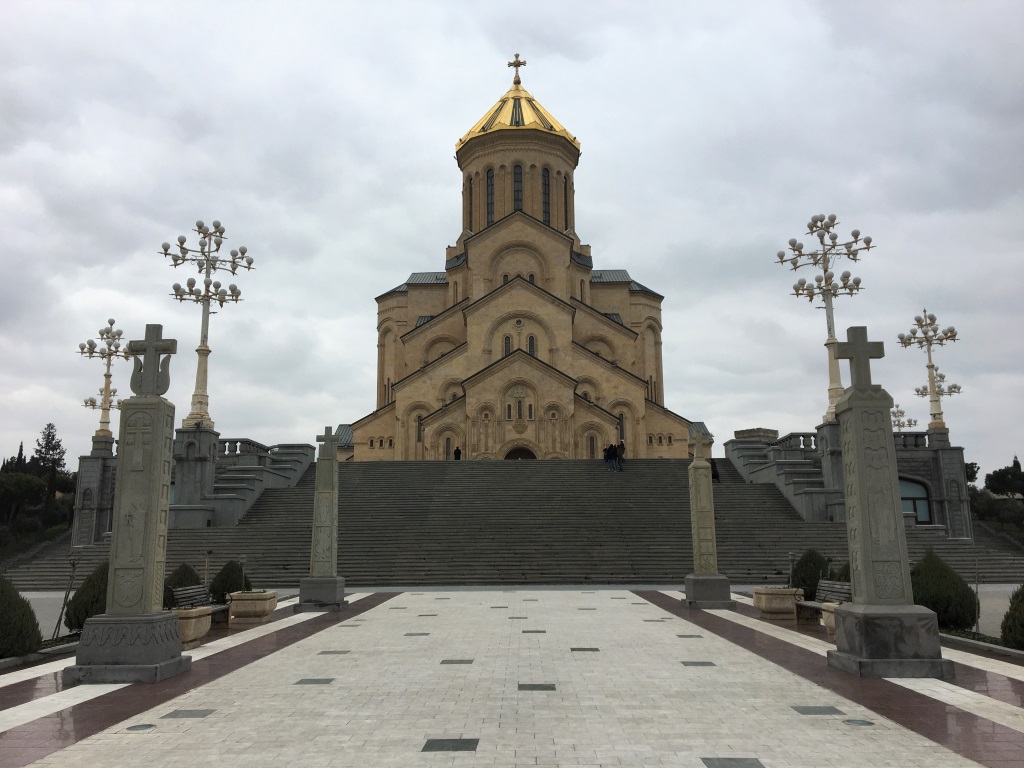
Tbilisi’s skyline is dominated by the eye-catching cones of Orthodox churches, none moreso than the golden-domed Holy Trinity Cathedral. In contrast to most of the city’s ancient✨ temples, Holy Trinity is a brand-new construction, consecrated in 2004. And the finishing touches are still filtering in. When we visited, stone-carvers were hard at work in the church yard shaping some intricately-detailed trim features. The cathedral is beyond huge✨ – one of the largest in the world, in fact. We strolled✨ among the icons inside✨, then stepped out front✨ to admire the awesome views that come with such a prominent placement. It is a popular setting for wedding photos, even on a weekday afternoon.
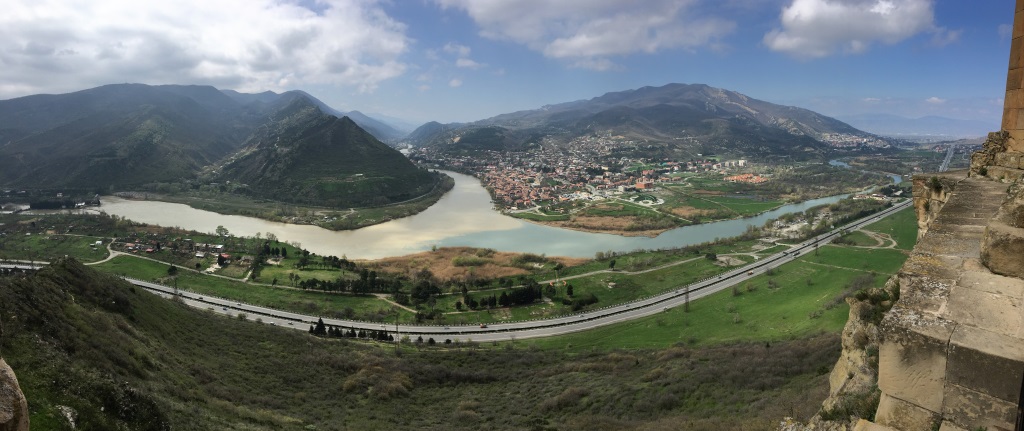
We ventured out to the suburb of Mtskheta for a hike on Orthodox Palm Sunday✨. A marshrutka to Mtskheta✨‘s traffic-free walking street cost just a lari each. Svetitskhoveli Cathedral✨ is the main attraction and towers✨ over the town. A church has occupied the site for more than 1500 years. It is one of the most important religious sites in Georgia, serving as the resting place of several Georgian kings and, supposedly, Christ’s robe. The interior was brilliant✨ with ancient frescoes✨ and golden icons. Women sold boxwood branches on tables in front of the church for the holiday. A steady stream of visitors✨ came to pray and seek blessings. Our real destination✨, though, was Jvari Monastery✨. We cherished the rare opportunity for some hiking, working our way over the river✨, under a highway✨, and up the steep and muddy hillside✨ to earn our place✨ at the top✨. Most people simply drove✨. The views over the Aragvi and Mtkvari Rivers were particularly worthwhile – the two dramatically different flows meet directly below the church, merging✨ into a single stream pointed at downtown Tbilisi.
Read our guide to hiking Jvari Monastery
Food & Drink
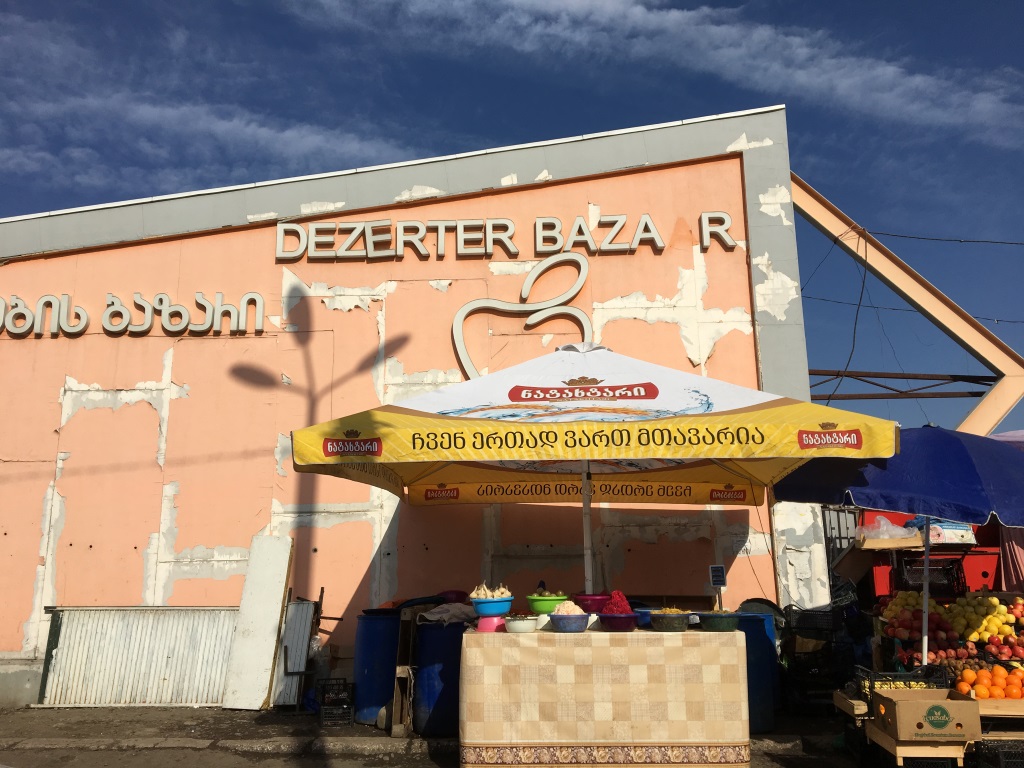
One of the main joys of Georgia is its cuisine. Carbs are as much a right here as beef is in Argentina. Sometimes they’re topped with cheese or egg, as in khachapuri (the national dish✨). Sometimes they’re stuffed with meat, like khinkali✨ (the other national dish). Mostly they stand on their own; fresh bread was among the most delicious and ubiquitous we’ve experienced anywhere in the world.
Carrefour✨ and Spar have made large inroads✨ in Georgia, but smaller markets still dominate daily shopping. Our neighborhood grocers covered almost all the bases – fresh cheese, meat, and vegetables – so we rarely had to venture to the bigger chains. Goodwill, an upscale supermarket in the downtown Galleria Tbilisi, carried harder-to-find imported items like peanut butter and fun flavors of chips. The Dezerter Bazaar is the primary open-air market in the city. We loved it for the cheap fresh produce (some people sold potatoes out of the backs of overflowing pickup trucks!) and wide selection of everything else. Homemade wines were especially amusing. Sold out of unmarked plastic jugs, we were fairly confident it wouldn’t make us go blind, but stuck to stuff from the boutique shops✨ just to be safe.
But our favorite food stop was the local bakery. Fresh shotis puri✨ came out of the brick oven all day long. At 80 tetri (about 33 cents) per loaf, it was an impossibly good deal. We ate it✨ without any toppings or spread – the perfect snack. Add some cheese and we’re back to khachapuri, sometimes known as Georgian pizza. Adjarian is the most famous and photogenic✨ variety. A boat of bread is filled with cheese and topped with an egg for good measure. Consuming it is easy and fun, just rip apart the bowl and dip it in the gooey center✨. Imeretian khachapuri is more like burek pizza✨. No egg, but still a rich cheesy dish full of deliciousness. Sulguni cheese is a preferred choice, and we found it suitable for poutine and slicing onto crackers as well. A potent smoked version✨ is also common. We utilized this in smaller doses in pasta sauces and other snacks. For storage purposes, we kept it wrapped in three layers of plastic to contain the dominating odor.
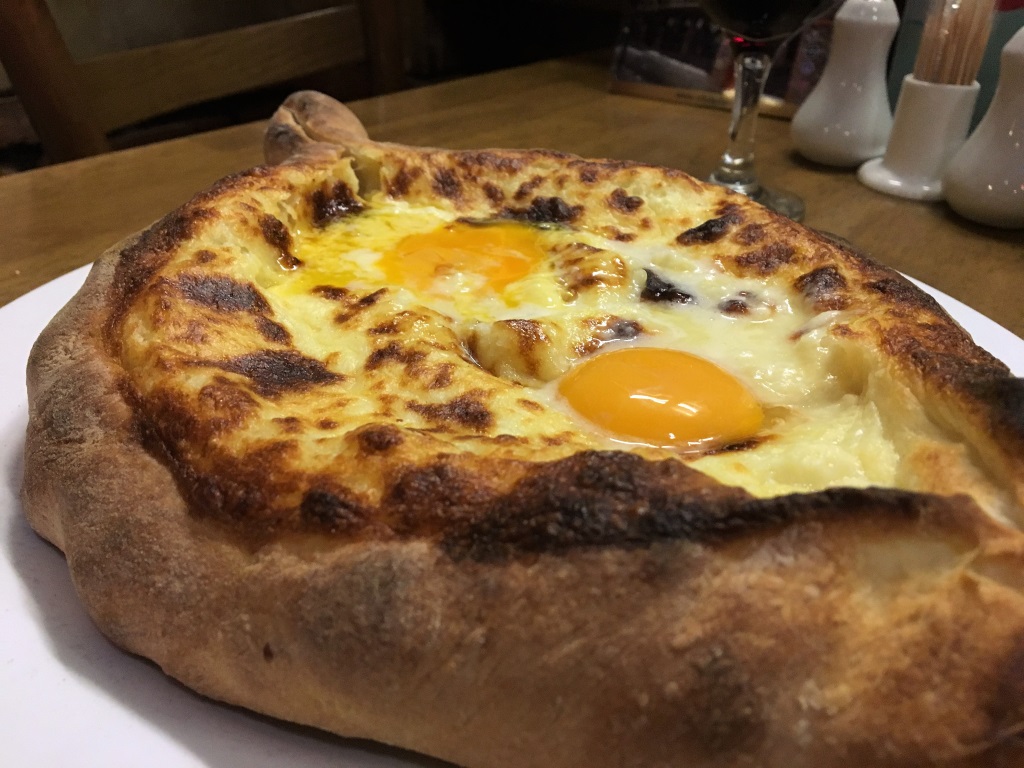
Khinkali was another must-have dish for us. These hefty dumplings✨ are usually made with raw meat or cheese filling and cooked by boiling✨. The twisted top makes for a convenient handle and gets discarded rather than eaten. One of the goals of consumption is to not let any juices drip. Tkemali✨ is another Georgian specialty. This sour plum and garlic sauce paired well with the dumplings and as a glaze for pork chops.
The restaurant Machakhela was our favorite place to find all these local delicacies✨, and at really fair prices, too. Book Cafe served up cappuccino✨ and Turkish coffee✨ and chess in a cozy setting✨. Plus it doubles as a book store – all the literature lining the walls is for sale. And we couldn’t help but stop by one more Tbilisi oddity. The American fast-food chain Wendy’s✨ (and Dunkin’ Donuts) can be found all over Georgia, and nowhere else in Europe. Hard to tell if we just missed junk food✨, but the burgers and frostys seemed better than we remembered.

Easter preparations were just in full swing when we left, including the sale of madder root, Georgia’s traditional option for dying eggs. Done properly, the roots produce a deep red color. Ours came out looking more like brown eggs. But the attempt was fun!
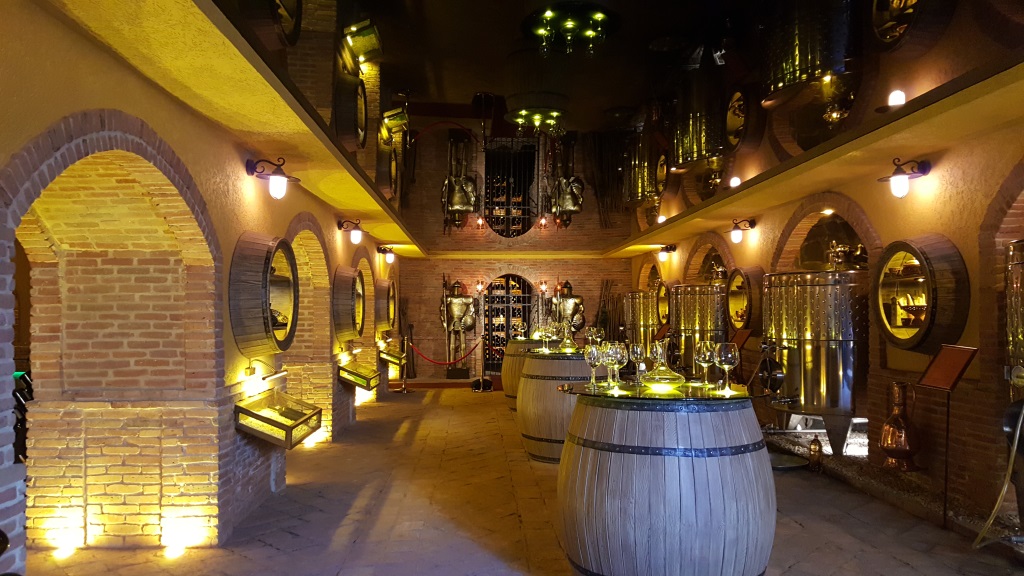
Georgia is one of the oldest producers of wine✨ in the world, and to this day uses varietals✨ and production techniques found nowhere else. Saperavi✨ grapes are the most common, appearing in just about every blend. Akhasheni✨, Kindzmarauli, Alazani, and Mukuzani✨ are all made with a majority of Saperavi grapes. Aleksandrouli✨, a distinct grape varietal, took extra work to find. It tasted more one-note than the Saperavi – clearly, Georgian winemakers play to their strengths. Though many producers now use Western-style production methods and barrel-age in oak, wine in the traditional style is still fermented – stems, skins, seeds and all – inside clay vessels called qvevri✨ (qwhere-vee). This process results in an unusual, highly tannic flavor, more acidic and drier but with unique notes unheard of in typical wines. Even white wines✨ can be made this way. Though still transparent, the result is a deep amber-orange✨ color.
Any grapes that escape wine production get turned into chacha. Sometimes called Georgian vodka but more akin to grappa or rakija, it was thoroughly alcoholic but unremarkable in flavor. On the other hand, locally-produced brandy✨ was very impressive. We sampled a number of varieties and found they compared favorably to far more expensive labels elsewhere in Europe.
Given the heavy emphasis on wine and harder alcohol, beer✨ gets the short end of the stick. The mass market✨ brews were pretty terrible. A craft scene is just starting to coalesce to make up the difference. NaturAle Craft Brewery makes a very good stout and red ale✨, and has a nice IPA as well. Their small setup✨ sold beer by the glass as well as by the liter for take away. Goodwill proved its good taste by stocking a couple Lithuanian✨ beers, a rare treat.
Getting around

Public transit✨ in Tbilisi is cheap and easy. A Metromoney card✨ is the simplest way to pay for buses and the only way to access the metro system. It costs ₾2 for the card (less than $1) and 50 tetri (about 20 cents) per ride on city buses and the metro. Tickets can be purchased aboard some buses, though exact change is necessary. We used the metro quite often since we were just minutes from Marjanishvili station. Like other Soviet-era systems, the metro tunnels run incredibly deep in Tbilisi. Sometimes the ride down the escalator took longer than the train!
Bus #37 is the simplest route to the city from the airport, and far cheaper than the predatory taxis that queue outside. Tickets can be purchased with cash, but exact change in coins is required. We took out cash immediately after landing, but our bills were useless here. A local actually bought our tickets when she saw us struggling with our bills and luggage. We really appreciated the gesture!
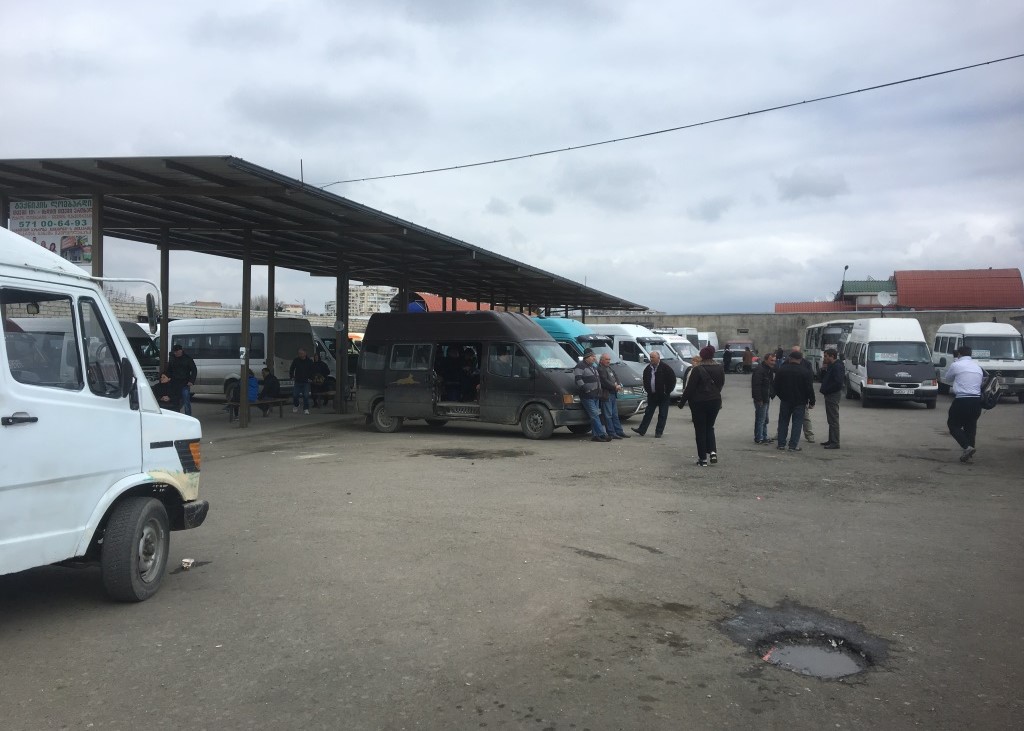
Marshrutkas to points around Georgia leave from all over the city. Didube is the home base for buses headed westward or north, while Ortachala and Alvabari are best when traveling south or east. We found the chaos of Didube✨ stifling, but even the pushiest drivers pointed us in the right direction when we made clear we had clear destinations (rather than tours) in mind. This was where we caught our rides to Mtskheta and, later, Borjomi. To reach Yerevan, Armenia, we visited the much-quieter Alvabari✨. A wrangler hustled us to the next vehicle scheduled to leave, in about 90 minutes’ time. But the 7-person van filled up quickly and 15 minutes later we were on our way. The bumpy, swervy, pothole-filled ride took about 6.5 hours but provided stunning scenery✨ for much of the trip. That ride was less of a bargain at ₾35 per person.
Stuff of interest
Our SIM cards↗ came from Magti. We paid about $4 to get a chip and 2 gigs of data. The customer service rep tried to teach us how to pronounce our street address in the most ridiculous way possible: by changing one single letter✨. That’s not the part we were struggling with!
Visiting Macedonia the previous month gave us an immersion course in Cyrillic, which turned out to be very valuable here. When our choices of signage were that or Georgia’s mystifying✨ elvish, puzzling out some Russian was sometimes a lifesaver. The Georgian script is nevertheless beautiful. But even transliterated to Latin characters, the words were unpronounceable in our mouths.
Drivers here were among the craziest we’ve seen in ages. Their cars spanned an eclectic mix of old Soviet-era junkers, new-money Beemers, and a stunning number of Priuses. There were also a surprising number of left-hand driving vehicles. Apparently Georgia is an equal-opportunity importer of vehicles.
Though Tbilisi’s power supply has gotten more reliable in recent years, we experienced several short power outages a week. They generally lasted just seconds, with the longest dragging on around five minutes.
Our apartment led to the first true medical setback of our trip. Kevin slipped on the faux-wood laminate steps on our last night in town, landing hard. The pain kept building over the next few days, so we ended up visiting a hospital at our next stop in Yerevan. There we discovered the cause: a broken bone… that he’d been walking on for three days. The unfortunate prescription: several weeks of bed rest.
What we learned
Although chaotic cities aren’t our thing, we both enjoyed Tbilisi well enough. Just, not quite to the level of the hype we had going in. If our apartment had been more to our taste (and caused less injury), it would have been a lovely✨ stay.




